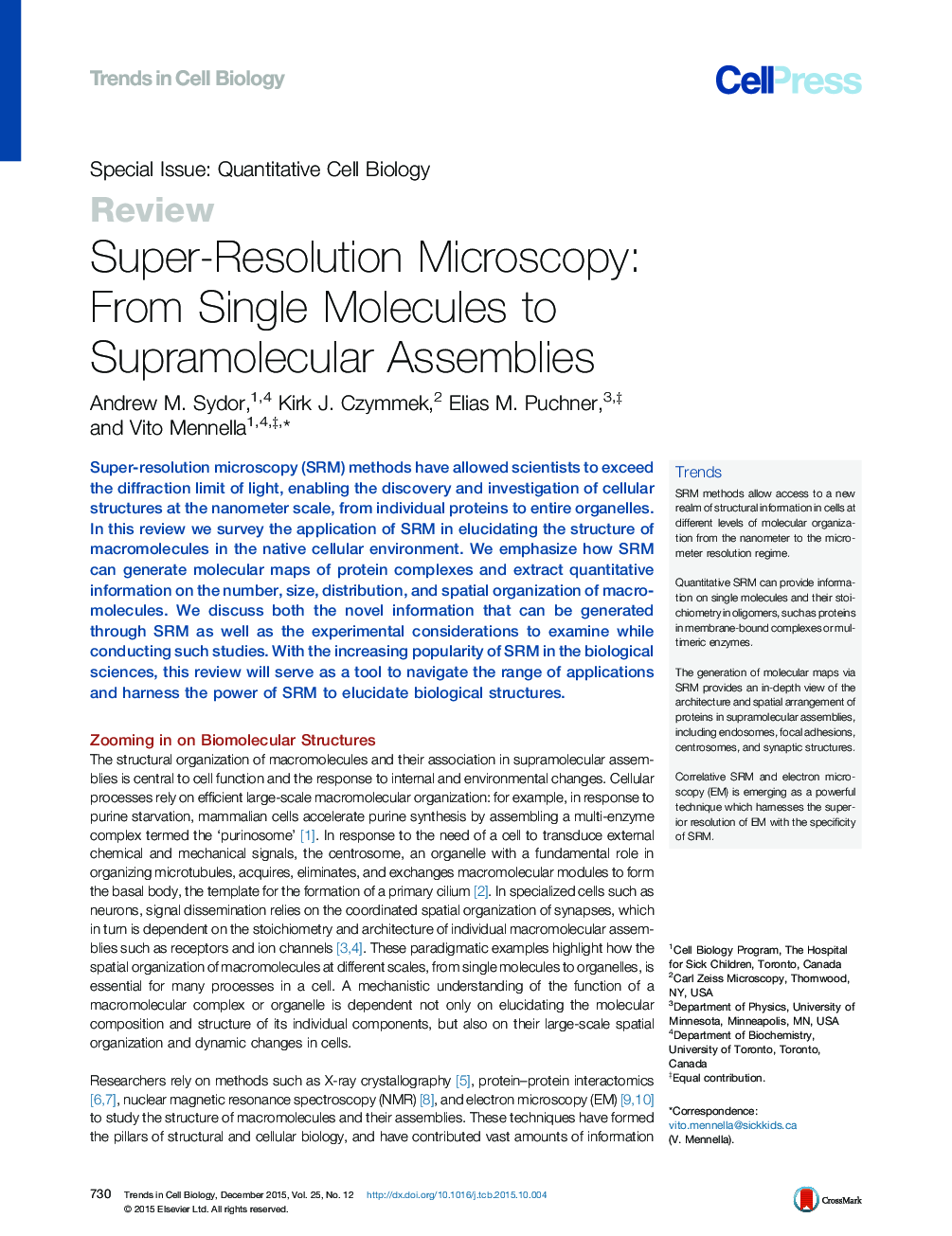| Article ID | Journal | Published Year | Pages | File Type |
|---|---|---|---|---|
| 2204256 | Trends in Cell Biology | 2015 | 19 Pages |
Super-resolution microscopy (SRM) methods have allowed scientists to exceed the diffraction limit of light, enabling the discovery and investigation of cellular structures at the nanometer scale, from individual proteins to entire organelles. In this review we survey the application of SRM in elucidating the structure of macromolecules in the native cellular environment. We emphasize how SRM can generate molecular maps of protein complexes and extract quantitative information on the number, size, distribution, and spatial organization of macromolecules. We discuss both the novel information that can be generated through SRM as well as the experimental considerations to examine while conducting such studies. With the increasing popularity of SRM in the biological sciences, this review will serve as a tool to navigate the range of applications and harness the power of SRM to elucidate biological structures.
TrendsSRM methods allow access to a new realm of structural information in cells at different levels of molecular organization from the nanometer to the micrometer resolution regime.Quantitative SRM can provide information on single molecules and their stoichiometry in oligomers, such as proteins in membrane-bound complexes or multimeric enzymes.The generation of molecular maps via SRM provides an in-depth view of the architecture and spatial arrangement of proteins in supramolecular assemblies, including endosomes, focal adhesions, centrosomes, and synaptic structures.Correlative SRM and electron microscopy (EM) is emerging as a powerful technique which harnesses the superior resolution of EM with the specificity of SRM.
